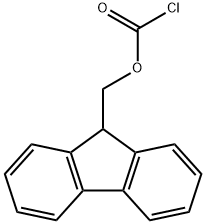2-CHLORO-2-HYDROXYIMINOACETIC ACID ETHYL ESTER
Synonym(s):1-Ethyl oxalyl chloride 2-oxime
- CAS NO.:14337-43-0
- Empirical Formula: C4H6ClNO3
- Molecular Weight: 151.55
- MDL number: MFCD00010209
- EINECS: 604-347-4
- SAFETY DATA SHEET (SDS)
- Update Date: 2025-01-27 09:38:02

What is 2-CHLORO-2-HYDROXYIMINOACETIC ACID ETHYL ESTER?
Chemical properties
off-white solid
The Uses of 2-CHLORO-2-HYDROXYIMINOACETIC ACID ETHYL ESTER
Ethyl 2-chloro-2-(hydroxyimino)acetate has been used:
- in the preparation of (+)-and (?)-Δ2-isoxazolines
- in the synthesis of CIP-AS (?), a chiral amino acid structurally related to glutamic acid, potential agonist at the ionotropic (±±)-2-amino-3-(3-hydroxy-5-methylisoxazol-4-yl)propionic acid (AMPA)-kainate receptors
- to generate ethoxycarbonylformonitrile oxide, in situ by treatment with sodium bicarbonate
- to prepare N-azirdinyloximes which on treatment with scandium triflate (418218) provide dihydro-oxadiazines
Properties of 2-CHLORO-2-HYDROXYIMINOACETIC ACID ETHYL ESTER
| Melting point: | 70-76 °C (lit.) |
| Boiling point: | 230.5±23.0 °C(Predicted) |
| Density | 1.36±0.1 g/cm3(Predicted) |
| storage temp. | 2-8°C |
| solubility | soluble in Methanol |
| form | powder to crystal |
| pka | 7.60±0.10(Predicted) |
| color | White to Almost white |
| Sensitive | Moisture Sensitive/Lachrymatory |
| BRN | 606193 |
| CAS DataBase Reference | 14337-43-0(CAS DataBase Reference) |
Safety information for 2-CHLORO-2-HYDROXYIMINOACETIC ACID ETHYL ESTER
| Signal word | Danger |
| Pictogram(s) |
 Corrosion Corrosives GHS05  Exclamation Mark Irritant GHS07  Health Hazard GHS08 |
| GHS Hazard Statements |
H315:Skin corrosion/irritation H318:Serious eye damage/eye irritation H334:Sensitisation, respiratory H335:Specific target organ toxicity, single exposure;Respiratory tract irritation |
| Precautionary Statement Codes |
P261:Avoid breathing dust/fume/gas/mist/vapours/spray. P280:Wear protective gloves/protective clothing/eye protection/face protection. P305+P351+P338:IF IN EYES: Rinse cautiously with water for several minutes. Remove contact lenses, if present and easy to do. Continuerinsing. P342+P311:IF experiencing respiratory symptoms: call a POISON CENTER or doctor/physician. |
Computed Descriptors for 2-CHLORO-2-HYDROXYIMINOACETIC ACID ETHYL ESTER
New Products
3-Iodophenylacetic acid 3-Pyridineacetonitrile, α-hydroxy- 2-Propanamine, 1-chloro-, hydrochloride (9CI) 3-(hexyloxy)-4-(pyridin-3-yl)-1,2,5-thiadiazole 2-Hexyn-1-ol Dibenzo-18-crown-6 Nickel(II) perchlorate hexahydrate, 98% 4-Bromophenylacetonitrile, 95% 3-Bromo-4-fluoroaniline, 97% Sodium tetraborate decahydrate, 98% Palladium(II) acetate, trimer, Pd 99% 4-Bromo-2-chlorotoluene, 97% N N Dimethylformamide Dimethyl Acetal (Dmf Dma) 2,3-Dichloro Benzoyl Cyanide [Side Chain] Bis(2-Chloroethyl) Amine Hydrochloride L-Glutamic Acid Diethyl Ester Hydrochloride 5-(Difluoromethoxy)-2-Mercaptobenzimidazole 1-Ethyl-3-(3-Dimethylaminopropyl)-Carbodiimide Hydrochloride [EDC Hcl] 1,4-Napthoquinone Bromoiodomethane Sodium Bicarbonate Methylene Dichloride (MDC) Ethyl Acetate Indole-3-Carbinol (I3C)Related products of tetrahydrofuran








You may like
-
 14337-43-0 Ethyl chlorooximidoacetate 98%View Details
14337-43-0 Ethyl chlorooximidoacetate 98%View Details
14337-43-0 -
 Ethyl 2-chloro-2-(hydroxyimino)acetate 98% (GC) CAS 14337-43-0View Details
Ethyl 2-chloro-2-(hydroxyimino)acetate 98% (GC) CAS 14337-43-0View Details
14337-43-0 -
 Ethyl 2-Chloro-2-(hydroxyimino)acetate CAS 14337-43-0View Details
Ethyl 2-Chloro-2-(hydroxyimino)acetate CAS 14337-43-0View Details
14337-43-0 -
 Ethyl 2-chloro-2-(hydroxyimino)acetate 97% CAS 14337-43-0View Details
Ethyl 2-chloro-2-(hydroxyimino)acetate 97% CAS 14337-43-0View Details
14337-43-0 -
 Ethyl 2-chloro-2-(hydroxyimino)acetate CAS 14337-43-0View Details
Ethyl 2-chloro-2-(hydroxyimino)acetate CAS 14337-43-0View Details
14337-43-0 -
 Cyclohexane, (2-propynyloxy)- 67967-07-1 98+View Details
Cyclohexane, (2-propynyloxy)- 67967-07-1 98+View Details
67967-07-1 -
 3-Iodophenylacetic acid 1878-69-9 98+View Details
3-Iodophenylacetic acid 1878-69-9 98+View Details
1878-69-9 -
 132945-75-6 (S)-1-Boc-3-methanesulfonyloxy-pyrrolidine 98+View Details
132945-75-6 (S)-1-Boc-3-methanesulfonyloxy-pyrrolidine 98+View Details
132945-75-6
Statement: All products displayed on this website are only used for non medical purposes such as industrial applications or scientific research, and cannot be used for clinical diagnosis or treatment of humans or animals. They are not medicinal or edible.
